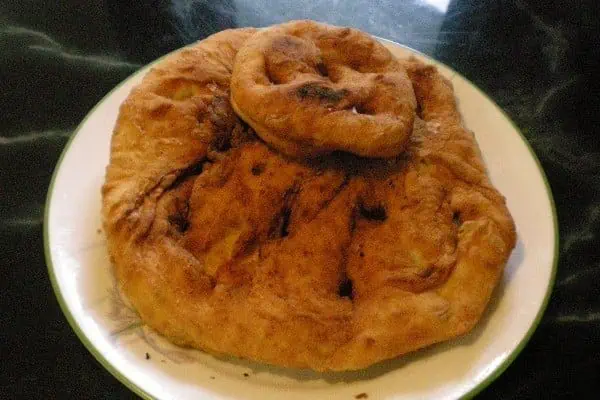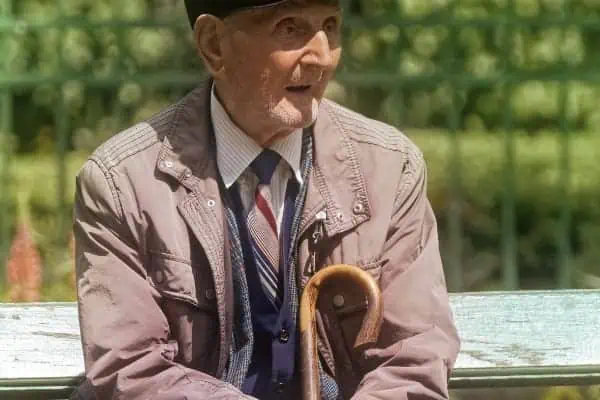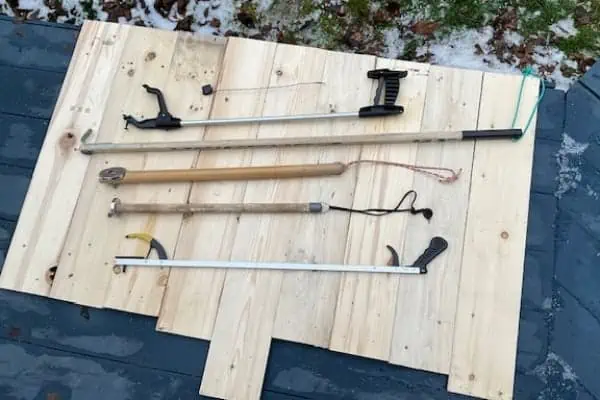Cast-iron cooking implements have been used in kitchens for hundreds of years, and are still very popular with all of us who have taken the time and effort to learn how to use them. They are equally at home on a campfire or your kitchen stove and oven, though due to their weight, you won’t see many backpackers lugging them up a mountain or even on a flat trail. However, it is the weight and the material (iron) which retains and evenly spreads heat, so whatever you are preparing ends up cooking with less heat, therefore creating less potential for burning. So where weight is not a problem—at home, or when truck-camping or on a river trip, for example— cast iron should be an essential part of a kitchen kit.
Original cast-iron pots came with legs and a hanging handle so that they could be stood in or hung above a fire or bed of coals in a fireplace or open fire. The legs are gone now, except on some of the larger Dutch ovens, which are intended to stand in a bed of coals. These large units also have a lip around the tight-fitting lid, where hot coals are placed to introduce heat from above as well as below.
Cast iron is available new at various prices, ranging from very inexpensive to the very expensive, imported-from-France Le Creuset items, which cost anywhere from $150 for a fry pan to $350 for deep casserole pot. These are handsome utensils but not exactly campfire cookware. Keep your eyes open at garage sales, second-hand stores and leaving-town sales, where even imported cookware can often be found for less than $20.00.
Don’t let some surface rust deter you from buying, as proper cleaning and seasoning will bring it back to life. Some of the less expensive new pots and pans have varying degrees of roughness on the inside and will be harder to season—and therefore to cook with—because of that lack of smoothness. A cared-for, pre-owned unit is the best.
Caring for Cast Iron
A brand-new or poorly cared-for older piece needs to be seasoned before use. It is a fairly simple procedure where the piece is washed, scrubbed with detergent (with a steel wool pad if necessary), rinsed thoroughly, and dried. Stubborn, baked/burned-on food scraps can be removed by simmering water in the pot for half an hour so. Use a lid for this process. Next, oil the item with olive oil (or any cooking oil or lard) and get it quite hot in the oven (if available) at 300?F. Then, use a basting brush to spread the oil over the interior, let it cool and wipe it out with paper towels. This process may have to be repeated a few times with a new item. The outside and lid should ideally get a light rub of oil as well to prevent any rust from forming. If necessary place a cookie sheet on the rack below the pan to catch any oil drips.
We have and use a number of cast-iron items both at home and at the cabin and they are NEVER washed with detergent, but I simmer water in them and re-oil the inside after every use. Just leave a dull sheen of oil on the inside, any more than that does not add anything to the seasoning or rust-proofing process (and if the pans are hung as ours are, they just drip oil on whatever is underneath them).
Cooking Tips
Frustration and disillusionment are common for many people using cast-iron cookware, likely because it seems to be too much work compared to all our non-stick, magic coated pots and pans, which are simply washed with the rest of the dishes. However, cast iron, when cared-for and kept seasoned, offers pretty much the same non-stick qualities as these modern high-tech units.
When cooking steaks, chops, sausages, or burgers, cook for a relatively short time on high, then put a lid and shut off the heat source. Wait a few minutes and voila—the heat retained by the cast iron and held in by the lid completes the cooking to how you like it. Try that in your high-tech chemical coated fry pan.
Cast iron is also ideal for camping. It keeps dinner warm longer than any other material and cast-iron Dutch ovens are versatile enough to cook anything from stews, soups, and roasts to baked bread or pineapple upside-down cake. Try filling your Dutch oven with stew ingredients, bury it in the coals and leave it all day. You’ll arrive back at camp with dinner hot and waiting for you to dig in. The Dutch oven is the original, no-electricity slow-cooker.
There are so many things you can do with cast-iron cookware that it’s no wonder it’s been around for so long. Google “cast iron”, and you’ll find numerous recipes and suggestions for use.
Enjoy.




